Apr 9, 2013 | painting
Frothy clouds and hazy distances make for simple scenes of awe in Samantha Keely Smith’s paintings. They’re landscapes taken to a new level – sparkling, glowing and fading – shining enigmas that show more of what we all hope heaven looks like than anything we could ever dream of seeing on this earth. The gods and elements interact without people to mess things up – water, nature and light converging into one scene of wonder.
Land combines with water in “Shift” – a wave of cloud crests in the sunlight above blue sand dunes and before misty air that shines in warm effervescence. Below the breaking wave you can see into the distant blue, to what looks like a glowing forest with clouds instead of leaves. Between two of the center trees shines a white spot of light, like a patronus spell being cast in the distance, or the center seed from which all this beauty has sprung.
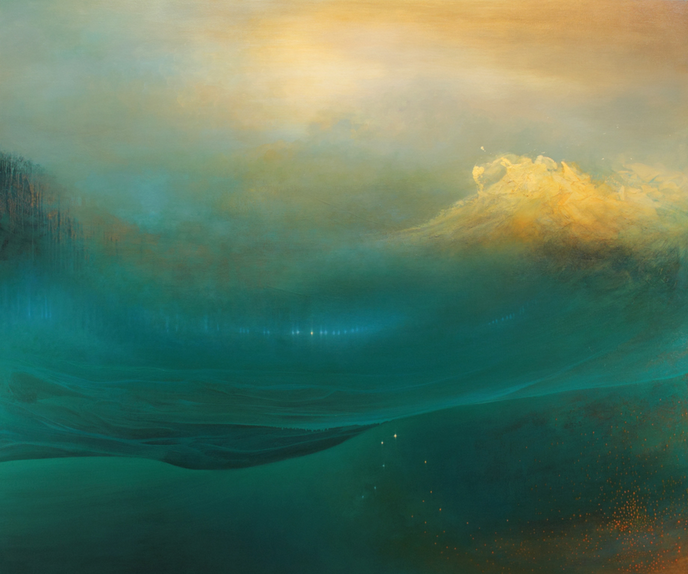
Shift
oil, enamel, shellac on canvas
60″ x 72 “
2012
The waves get speckled orange in “Progeny” – light clouds of paint breaking and bursting in the foreground before a shimmering blue-green haze. “Mutiny” substantiates the water more, almost letting it fill up the canvas and submerging us below its depths, but not without a look into the distance at the land that might be there. Again with a breaking wave as the focus, this one glows bright white, splashing up with spots of pink and shades of orange. “Gathering” shows the calmer scene of a watery mountainside that leads off into the light.
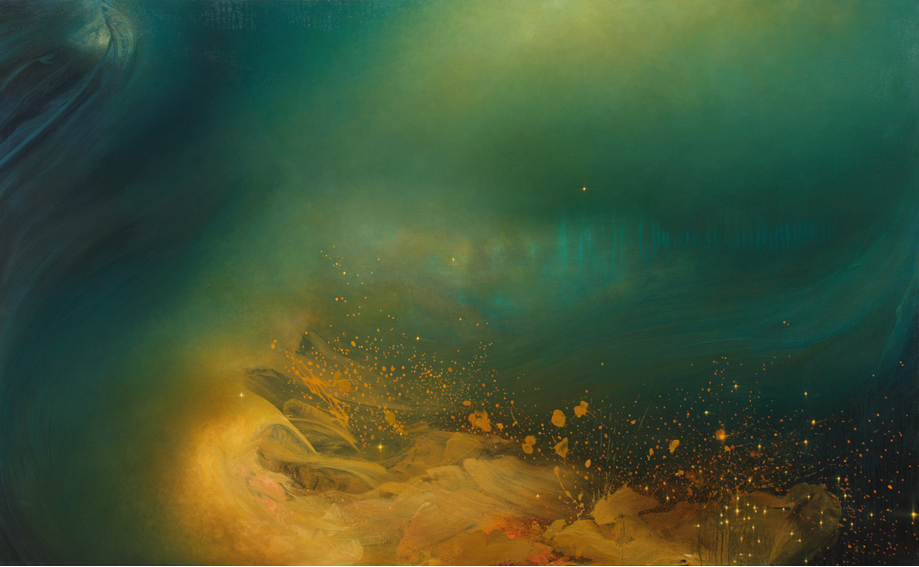
Progeny
oil, enamel, and shellac on canvas
48″ x 78″
2013
Samantha Keely Smith was born in England but moved to the US as a child, and now lives and works in New York. Her work has been shown all over New York City and in Arkansas as well. In 2011, her solo exhibition on Madison Avenue was featured as an Editor’s Pick on ArtInfo, who wrote that her works, “play at the edge of abstraction, blurring between light-filled fields and non-objective compositions.”
Samantha’s artist statement reads:
“Smith’s artwork represents a striving to reconcile the inner world of instinct and the tidal sweep of our emotional life, with an external world that is both beautiful and hostile in its natural grandeur. She attempts to map the place where these worlds intersect.
The translucent layers of paint, contrasting soft ethereal brushwork and harder edged sweeping gestures, echo this divergence and depict a timeless place that hovers between dream and reality in a way that is simultaneously alluring and menacing. The work exhibits the struggle between and among the variety of human impulses: impulses that are as necessary as they are contradictory, and which therefore constantly undermine our psychic and social coherence even as they endow us with vitality, soul, and life. “
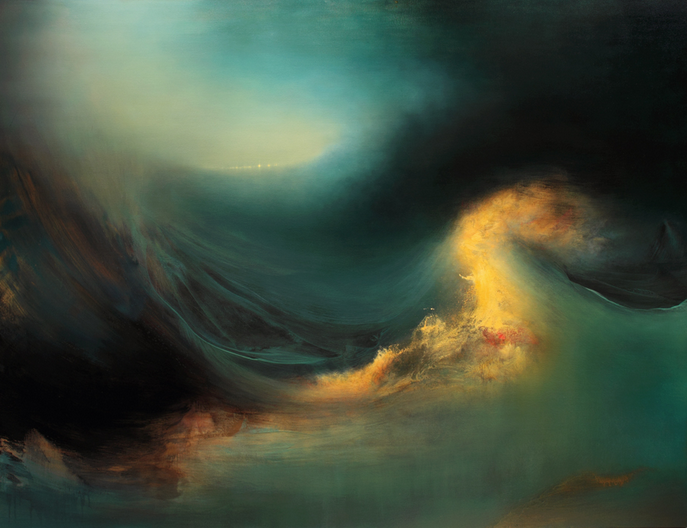
Mutiny
oil, enamel, shellac on canvas
60″ x 78 “
2012
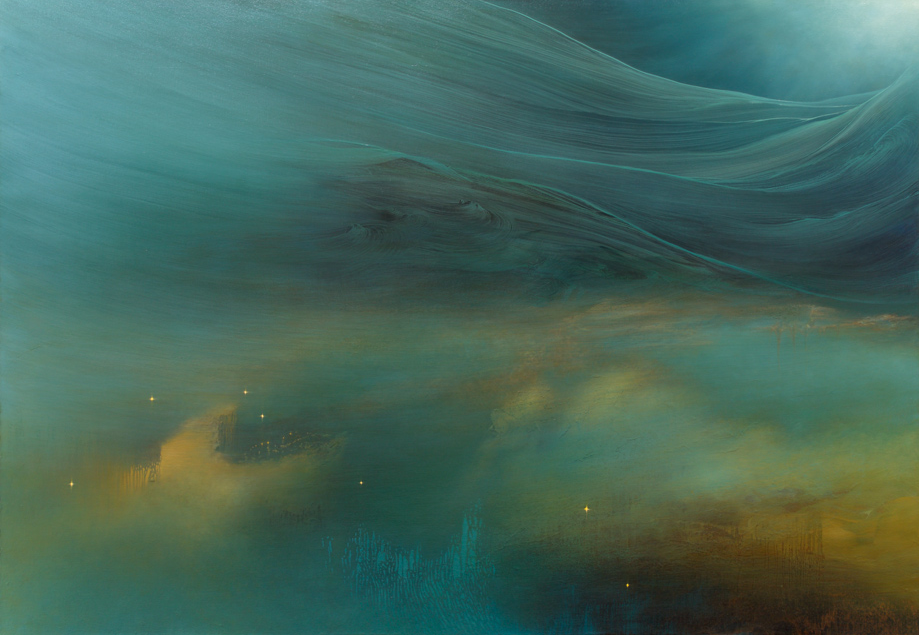
Gathering
oil, enamel, and shellac on canvas
50″ x 72″
2013
For more of Samantha Keely Smith’s work check out her website and her Tumblr.
GD Star Rating
loading...
Apr 8, 2013 | film
The Hours (2002) is a sad, thoughtful movie filled with powerful women. Only, they don’t seem powerful at first. Instead they come across as complacent, frazzled, and confused, but in the end they find what they’re looking for, and it isn’t what you’d expect them to find either.
The movie opens on Virginia Woolf, writing her goodbyes into letters before she walks into the woods and fills her pockets with rocks. Foreshadowing at it’s most obvious, she writes to her husband, “Everything is gone from me but the certainty of your goodness. I can’t go on spoiling your life any longer. I don’t think two people could have been happier than we have been.”
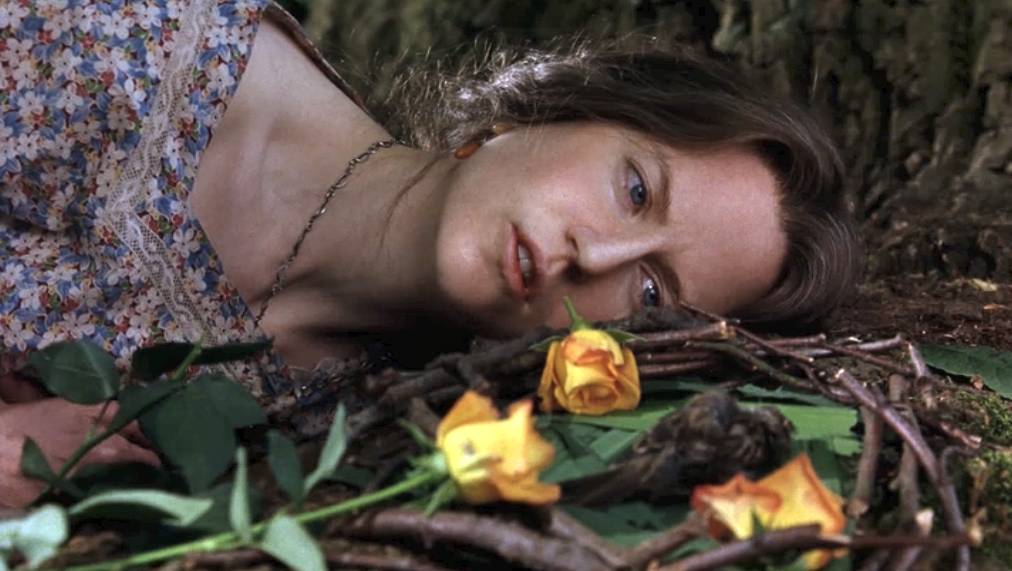
The rest of the movie’s beginning works to thrust you into the lives of three women – Virginia Woolf in 1923 played by a very intense Nicole Kidman, Julianne Moore as Laura Brown in 1951, and Clarissa Vaughan in 2001, played by the ever fabulous Meryl Streep.
Phillip Glass wrote the movie’s cascading piano melodies that rush the film along and link the women’s lives together. At the beginning we quickly flip between time periods – we hear three different ages of alarm clocks go off as the women awake in their own time. We follow them through one day alone; three days in three decades that are all somehow linked to Virginia Woolf’s book Mrs. Dalloway.

Behind each woman’s eyes is a kind of emptiness, a longing for something more, for that elusive feeling of happiness that keeps slipping through her fingertips. This movie does an incredible job of capturing that feeling, that hollow feeling that makes the absoluteness of death seem less scary. Clarissa’s storyline in New York city is cast in a gray light that makes our modern age seem bleak and weary. But somehow the brightness of the 1950s and even the vivid nature scenes in the 1920s work to emphasize the unhappiness that our protagonists are stuck in. Even when Laura Brown has her lips painted red, her eyes still well up with tears and her mouth breaks into a silent cry when no one is looking.
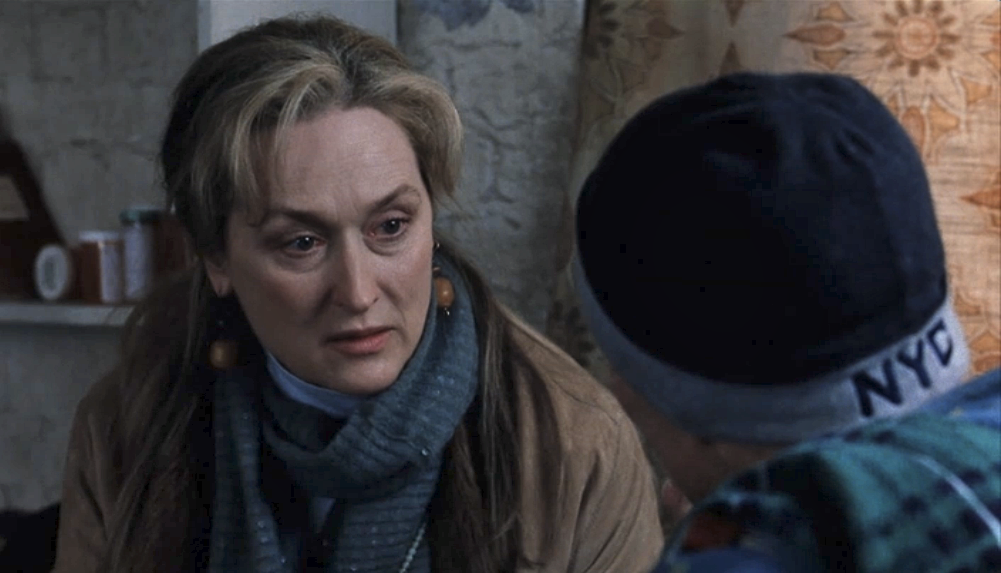
One of the most beautiful scenes comes when Virginia buries a bird with her little niece who came to visit. Even though age and experience separates them, the two girls have an understanding, the little girl can just sense the sadness within the woman who lives more for the characters in her book than for herself.
“What happens when we die?” the little girl asks her.
“We return to the place where we came from.”
“I don’t remember where I came from.”
“Nor do I.”
More than anything though, this movie is intense, slowly building up to an ending you can’t guess at until it arrives. There are scenes of sexual confusion that arise out of desperation, and abrupt closeups of little things that shouldn’t matter, like trash cans when things get thrown into them and eggs as they’re cracked into a bowl.
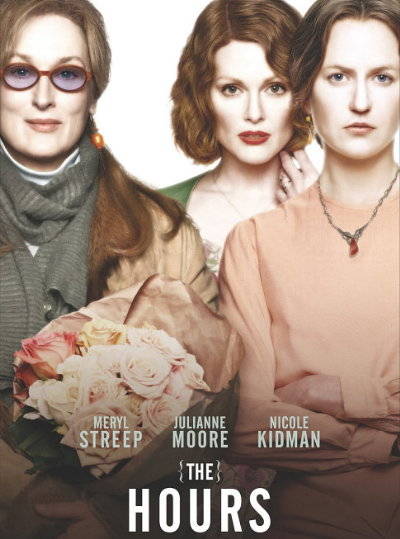
One of my favorite quotes comes from Meryl Streep’s character Clarissa, who tells her daughter:
“I remember one morning getting up at dawn, there was such a sense of possibility. You know, that feeling? And I remember thinking to myself: So, this is the beginning of happiness. This is where it starts. And of course there will always be more. It never occurred to me it wasn’t the beginning. It was happiness. It was the moment. Right then.”
You can stream The Hours on Netflix Instant, and read more about it on the IMDB page.
GD Star Rating
loading...
Apr 5, 2013 | illustration
Thick paint drips down her face in a color close the skin’s; it covers and reveals hair and flesh wherever gravity takes it.
Melissa Cooke’s series “Surfaced” analyzes obscured faces – faces covered in liquids and warped by Xerox machines in ways that make you wonder where the real skin actually begins and ends. But these aren’t photographs, so none of it is really real anyways – they’re graphite drawings that capture every follicle and wrinkle, every tug and pull of skin, and they immerse you in a world that plays with texture and perception in bold closeup ways, gathering intensity from details.
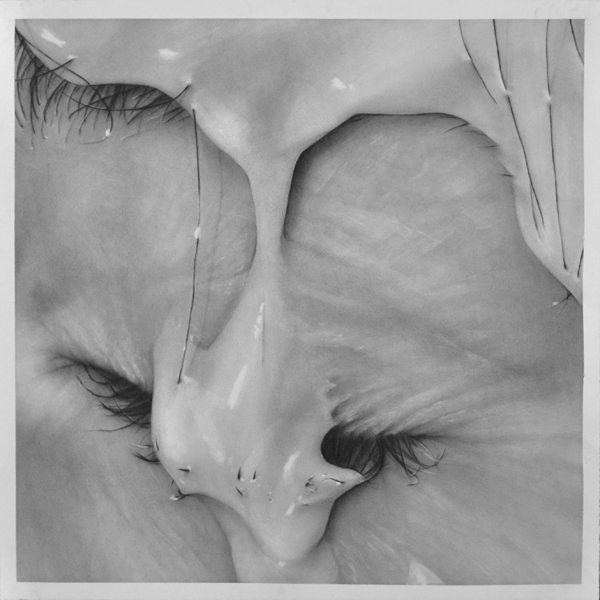
Trickle, graphite on paper, 24 ” x 24 “
Paint and hair don’t function harmoniously the way paint and skin do. Hair isn’t manageable and flat – it pokes through the liquid that’s attempting to cover it, refusing to be masked or hidden. In “Surfaced,” this is the role of the eyelashes and eyebrows, lines of rebellion against the paint, breaking through the color the same way the lines in the skin do.
They become something different because the paint gives them an alias, a form of cover, but the most substantive parts can’t be completely obscured. The paint dips into the flesh’s crevices, filling and amplifying the lines that have come from years of smiling and crying.
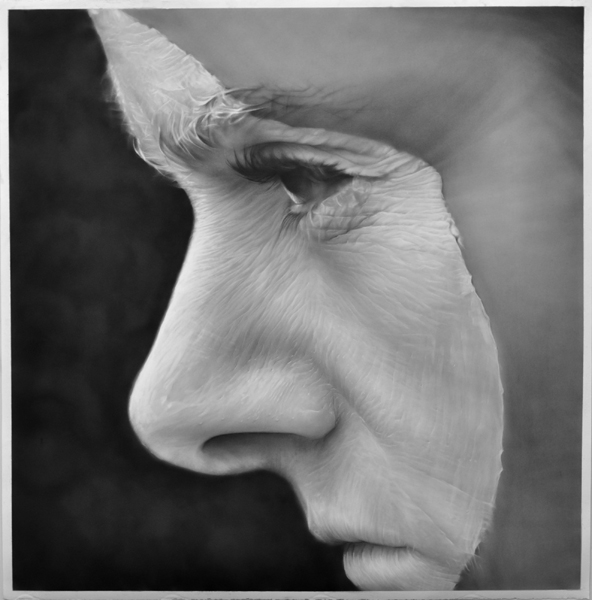
Crested, graphite on paper, 50 ” x 50 “
According to Melissa’s description of the series, “Surfaced” works to examine the relationship between photography, painting and drawing in portraiture. She used her own face as a canvas, painting and pouring liquids onto herself as she took photographs. Then, she used those photos to create her graphite drawings.
“The photo shoot references the practice of drawing and painting; then the final graphite drawing references photography,” she said, “The boundaries between the mediums are broken down and the processes are interwoven.”
She purposefully focused on zoomed in sections of her face, obscuring the notion of the portrait and concentrating on humanness in general as opposed to one specific human:
“The cropping pushes the face to the surface of the paper, making the figure more ambiguous. Flesh becomes abstracted: obliterated by paint on the skin, distorted by the eye of the camera lens, or smeared by the glass of a Xerox machine.”
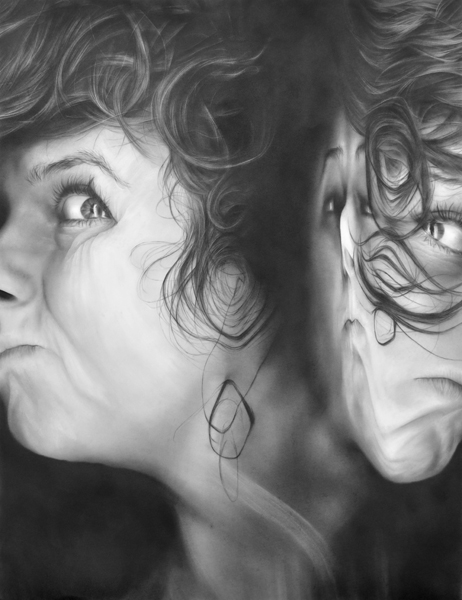
Xerox #5, graphite on paper, 50 ” x 38 “
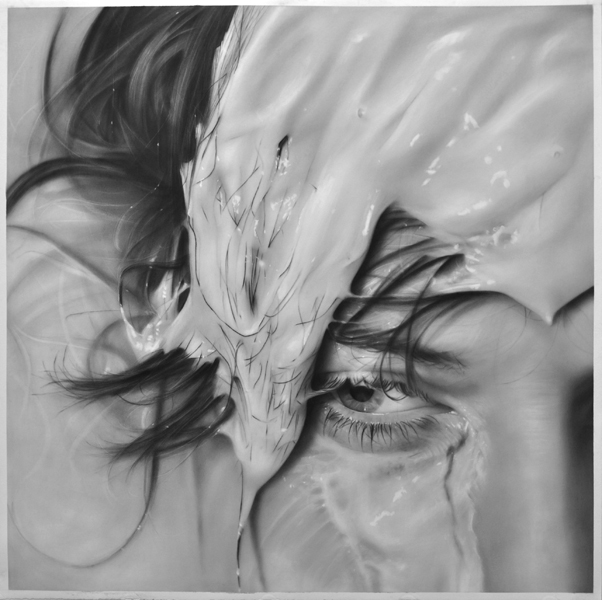
Washed Out, graphite on paper, 50 ” x 50 “
Melissa Cooke, 30, is an artist originally from Wisconsin specializing in these kind of intricate graphite drawings that examine the relationships between photography, performance, and drawing in portraiture.
She makes her drawings by dusting thin layers of graphite onto paper with a dry brush, and then editing the soft graphite against the smooth paper by erasing in details and textures. She doesn’t use pencils at all, so more than anything it’s an art of subtraction instead of addition, likening it to sculpture in a way, as Melissa carefully chips away the spots of color that shouldn’t be there.
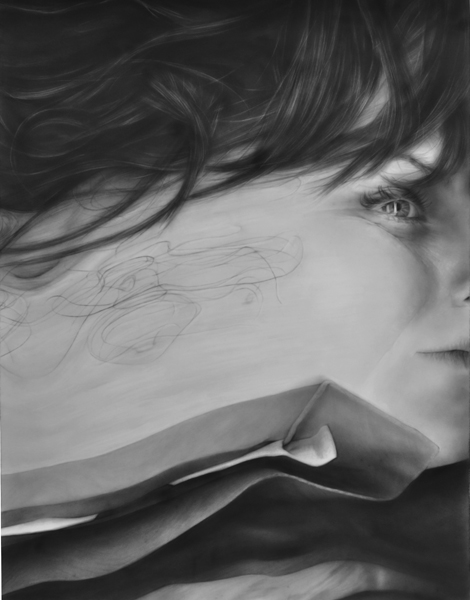
Xerox #1, graphite on paper, 50 ” x 38 “
See more from “Surfaced” and her other series of graphite drawings on Melissa’s website.
GD Star Rating
loading...

















